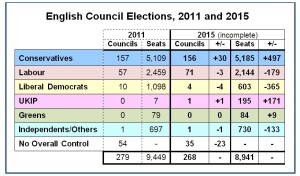Steve Rolfe
When Michael Gove reiterated the Brexiteers’ mantra of ‘taking back control’ at the recent Conservative Party Conference there was a strong sense of déjà vu about the whole performance. And not just because we’ve all heard the ‘taking back control’ message over and over again in the last 18 months. The repeated rhetoric of control also has strong echoes of an earlier Conservative policy idea – the notion of a ‘Control Shift’ at the heart of Localism and the Big Society. And the parallels go further. Just as campaigners have questioned what it might mean to ‘take back control’ after Brexit and who ends up in control, so my Local Government Studies paper, ‘Divergence in Community Participation Policy: Analysing Localism and Community Empowerment Using a Theory of Change Approach’ questions the policies which ostensibly aim to give power and control to communities.
Back in the early days of the Coalition government (remember those innocent pre-EU-referendum days?), the ideas of the ‘Big Society’ and shifting control to communities through Localism were big news, even if nobody could really work out what David Cameron meant by the Big Society. A whole raft of ‘new community rights’ were created, giving communities opportunities to challenge and take over public services, buy local assets, create their own Neighbourhood Plans and even develop local housing. Alongside this, the Localism Act aimed to ‘strengthen accountability’ of public sector organisations through directly elected mayors and Police and Crime Commissioners, plus referenda on ‘excessive’ council tax increases. At the same time, the Scottish Government were using similar language to set out their Community Empowerment agenda, giving communities rights to participate in service improvement and extending rights relating to control and ownership of land and assets. Both these policy frameworks are still in place, shaping community participation across England and Scotland, albeit that anything non-Brexit gets very little media attention these days.
On the surface, Localism and Community Empowerment seem to share many common features. Both see community voices as an important tool to improve public services, and community action as a means to fill some of the gaps between such services. Moreover, the language of ‘devolving power to communities’ sounds very similar on both sides of the border. However, as I try to argue in my paper, a more detailed look at the assumptions underlying Localism and Community Empowerment suggest that the UK and Scottish Governments have quite different ideas about how communities should participate and how they should relate to public sector agencies.
Crucially, the Scottish Government’s agenda emphasises a positive-sum conception of empowerment, where communities and public sector agencies each gain power by working together collaboratively. By contrast, most of the elements within Localism operate on a zero-sum basis, focusing on taking power away from the local state to give it to communities. Clearly there are risks in both approaches. In the Scottish partnership approach local authorities may simply hang on to power and refuse to collaborate – the evidence from decades of community work in Scotland provides many examples of intransigent bureaucrats, although also many tales of productive cooperation. In England, analysis of the policy detail suggests there are more complex and subtle risks involved. Hidden beneath the rhetoric of community rights are mechanisms which turn communities into ‘market-makers’, forcing local authorities to put services out to tender and challenging limits on house-building. Hence control is not so much shifted to communities, but rather handed to the free market and private businesses.
Interestingly, however, the more recent evidence about the use of Localism’s ‘new community rights’ suggests that communities are savvier than David Cameron perhaps expected. The Community Right to Challenge (the most blatantly market-focused element) has been hardly used in the six years since it was instituted. And whilst Neighbourhood Planning has proved very popular across England, most communities are attempting to use it to exert some control over the local housing market, rather than letting it rip.
So perhaps those fans of Brexit who continue to trumpet the idea of ‘taking back control’ may need to reflect a little on who is actually gaining control as we leave the EU. The evidence from community participation policy suggests not just that the rhetoric may be concealing the intended winners in the process of shifting control, but also that such processes are often unpredictable as multiple actors attempt to impose their own notions of control.
 Steve Rolfe is a Research Fellow at the University of Stirling. His research interests include community participation and empowerment, social enterprise and housing. Before entering academia, he worked in local government for 15 years in a range of community development and policy roles.
Steve Rolfe is a Research Fellow at the University of Stirling. His research interests include community participation and empowerment, social enterprise and housing. Before entering academia, he worked in local government for 15 years in a range of community development and policy roles.


